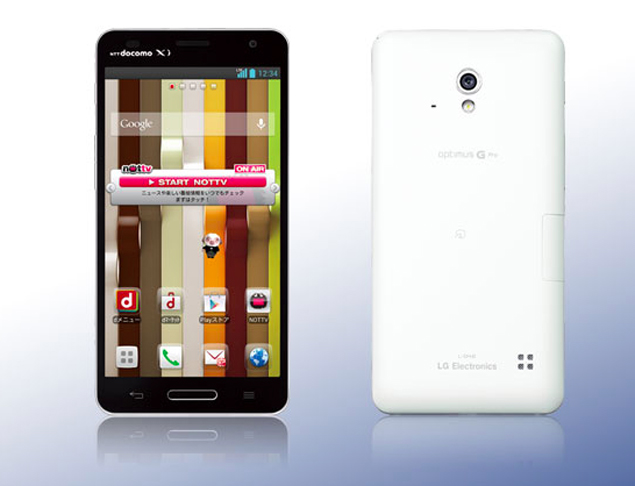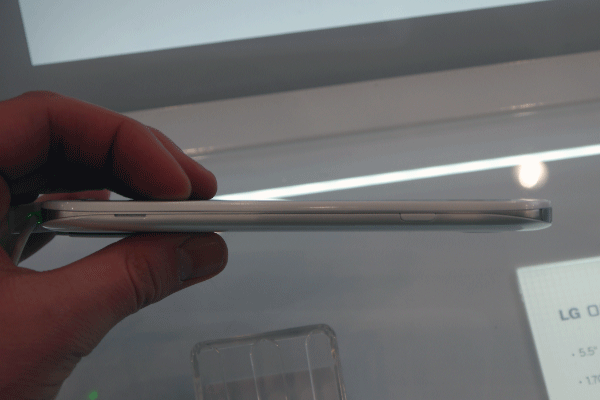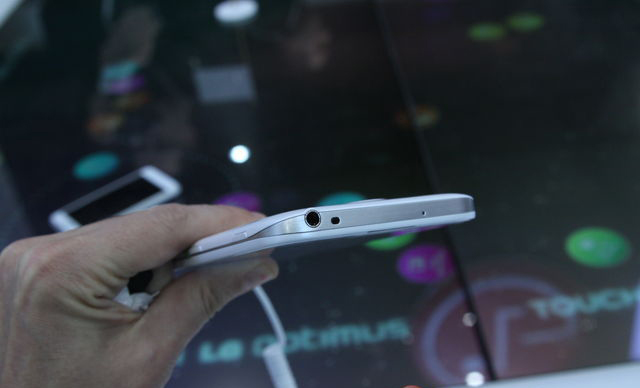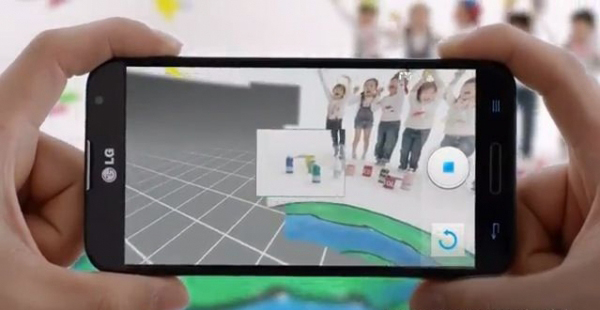LG Optimus G Pro Review
Introduction
LG Optimus G Pro is LG’s champion in the high-end competition this year. It is the first handset of LG to sport the so popular nowadays Full HD 1920×1080 resolution. The device is already available in two different versions – in Korea it is with 5.5’’ display and in Japan – with 5’’ display. It will be released worldwide in the second quarter of 2013 and is expected to hit the American market, too, though the version that will be released there is not yet known. Now let’s get you acquainted with the 5.5-inch version.
Design
Compared to Samsung Galaxy Note II, which has display of the same size, LG Optimus G Pro feels easier to handle and is narrower and thinner than the former. The device is palm-friendly and weighs only 160g (which is a creditable achievement for such a big device). This is mainly because the chassis is completely plastic, including the patterned back cover, which is removable and the NFC is integrated on it. The metal used in the chassis is only the rim around the sides and the ring around the camera lens. Speaking of the keys, the back key of the phone is placed on the traditional left for LG side, which makes it impossible to operate the smartphone with one hand. However, there is an additional button – the QButton, which is placed above the volume control button and can be programmed to launch any app we want. If only it could be programmed to function as a back key, this would be the best big-screened device out there. But this may come true only if the guys from XDA try to make it possible for us. The three buttons – the volume control button, the power button and the Qbutton are easy to use and the same is true for the home button underneath the screen. The home button is encircled with a notification light in six colours, which is lit up to notify you for different things as missed calls or messages and also flashes when the alarm goes off.
Display
The display of LG Optimus G Pro, as we already mentioned, is 5.5’’ (for Korea) and its resolution is 1920×1080. The pixel density is not 441, but is 401, which is also quite good characteristics. We see that the screen has other good qualities – ‘real’ colours, wide viewing angles and low screen reflectance, which makes it proof against the sunlight. In fact, the only drawback of the screen comes from the software for automatic brightness adjustment, which needs to take its time to make the screen dim inside and bright outside. The adjustment ranges and if you have manually set it to half-brightness, in auto mode it will change in some +/- %, while if it is at 80 % in manual mode, it will reach 100 in automatic. Last year LG Optimus 4X HD came with the same issue, but LG released a fix later, so maybe the case with this device will be the same.
Hardware
LG Optimus G Pro sports the best for now mobile processor – Qualcomm Snapdragon 600, clocked at 1.7GHz. This provides you with perfect functionality and the device won’t fail no matter how many apps you launch. This is also ensured by the 2GB operative memory the device it comes with. The handset comes with 32GB storage capacity, but only 23 of them are available for the user. However, it supports microSD card, so the free space will not be a problem. LG Optimus G Pro comes with LTE and HSPA+ (42 Mbps) radios, as well as with the constant Bluetooth, Wi-Fi, Wi-Fi Direct, Miracast, A-GPS (GLONASS), DLNA and NFC. If there is another LG handset around, you can use SmartShare Beam to send files to it wirelessly. The battery of the device is 3140mAh, but we haven’t heard the official standby and talk times yet. The battery is easily swappable, so if you need some more energy supply, you can get a second one. The device seems to come with quick charging functions – it takes less than hour and a half to fully charge it.
Camera
LG Optimus G Pro comes with two cameras – 13MP with LED flash main (rear) camera and 2.1MP front camera for video chat and self-shots. The device has several shooting modes like Virtual Panorama (creating 360 degrees photo), normal panorama and HDR. The camera performs well and it seems that the auto mode works better than HDR and Intelligent Auto, unless you are a professional. The video is recorded in Full HD at 30 frames per second and the HDR video mode is a fact, but under the name WDR – Wide Dynamic Range. There is also a feature called Dual recording which allows you capture picture-in-picture using the two cameras simultaneously.
Software
The device comes with Jelly Bean, modified to turn into Optimus IU. According to the tradition, you can choose whether the launcher will switch along to landscape mode with the screen orientation. LG Optimus G Pro uses the first name brand Android with a dedicated landscape mode. There is a QRemote app, which, with the help of the infrared sensor can be used as a remote control for TV sets and other devices. However, the list is too short yet, but it surely will be expanded later. All in all, the software is perfect and optimized for a big-screen device, so you won’t need anything more for now.
Conclusion
LG Optimus G Pro seems to win against the Samsung Galaxy Note II, but if you don’t like phablets, it is not your call. For example, a lot of people may prefer Xperia Z, which will be more comfortable to handle and carry. However, there are different tastes and if you want the ultimate Full HD screen experience, this high-end device, which is this year’s LG flagship, will satisfy all your needs.







